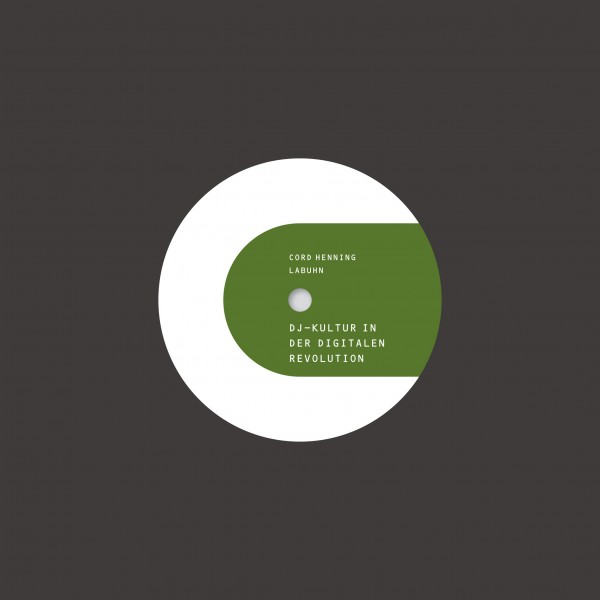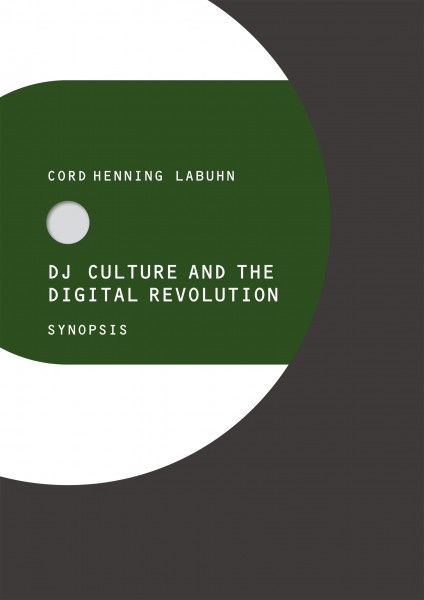DJ-KULTUR IN DER DIGITALEN REVOLUTION: Cord from Robosonic (a producer team I really love a lot, as you know from my previous interviews with Sacha and Cord) and I have been talking over this every once in a while for months now and I am very, very happy that Cord finally(!!!) decided to put it out to the world, so everyone can share his academic insight and the result of loads of research.
There are not that many people in the music scene that actually do academically dig into the field of music, and I highly recommend this to everyone of our readers: DJs, producers, gadget producers, marketers, bookers, club owners, labels, managers, FANS… practically everyone involved!
The sneak preview will give some insights of the purpose of this study and invites you to discuss it!
Feel free to hand in your review or opinion about it via stylistberlin!
DJs and Culture Clash
Sneak preview of the publication “DJ-Culture in the Digital Revolution”
by Cord Henning Labuhn
The meeting place of analogue tradition and digital innovation in DJing has been marked for many years by argument, compromise, inspired collaboration, winners, losers, philistines and hate-preachers.
In an ideal world DJs would be free to decide which side to take, as would their audience and the labels who publish their music. However, the forward march of computer hardware and information technology has made this question rather more perplexing. Various sections of the DJ population are fleeing to one camp or the other, shrieking from confusion and fear of the unknown. Is that part of tradition? Is this a step forward?
Today’s DJ now has heaps of equipment, apps and gadgets at his or her disposal. The vinyl market still exists, but has shrunk to a niche within a niche. And thanks to social media, even a respected veteran can swiftly end up being pilloried due to a tactless remark on this controversial topic.
One might have imagined that this debate would already be over. The “real DJs play vinyl” creed has become not just dusty but surreal: online music stores aimed at DJs now deliver millions of tracks across the world, while exclusive promos come mostly by email and only very rarely as test-pressings or dubplates. Laptop-based DJ performances might seem unglamorous due to the commonplace nature of the computer technology, but this doesn’t have to mean they are inferior to the more transparent traditional handywork of a mediocre vinyl disc jockey.
The ‘freshness factor’ of a new release has sunk to practically zero, and a DJ no longer needs to pick the best five from a hundred discs but can instead take the best ten files from five hundred.
People are therefore left searching for more and more needles in a rapidly-growing haystack.
It doesn’t sound like such a bad deal for music fans at first: more music is available, and they don’t need to confine their choice to a narrow selection, since the demand nowadays is always for ‘new stuff please, and plenty of it’. The flipside: we have to cram unbelievable amounts into our ears and then clear them out again afterward.
Bad news too for poseurs – unfortunately there’s no longer anything special about being a DJ, at least until something extra is added to the performance. The masses now own masses of music themselves, and have to pick their own selections every day. The more gregarious among them take this into the public arena and ‘play out’. Who are these people, and what are they doing there? How much of what they do is art, and how much of it is providing a service? What makes someone a DJ? How do they deal with their culture’s analogue tradition and digital present?
The contemporary life of a DJ in the digital ether demands consistent self-promotion, showmanship, confident presentation and shrewd networking – not to mention the oft-discussed “dialogue” with “customers” which takes place in social networks. Markets are conversations here; fans are “followers”; and many friends of a DJ are themselves also DJs. They add to their wider public performances with huge numbers of digital contributions in the form of text, photos, videos, graphics, charts and so on.
The extra attention gained like this can be converted into marketable value, but this shouldn’t be confused with musical relevance, quality or innovation – particularly so when it comes to the transparent marketing mechanisms employed by those who try to sell a false picture by manipulating numbers of clicks, plays, fans or even chart positions. The common practice within the scene of ghostwriting tracks seems like a harmlessly ‘old hat’ showbiz trick in comparison, but has the same goal of making the DJ appear a more talented musician than they really are. For this reason, the greatest challenge for music lovers – whether DJs or consumers – is still to develop an individual ‘good’ taste and system of filters independent of peer-pressure, elites and the digital herd-instinct.
This task remains rewarding for those DJs who reach their audience despite inflation, whether it’s accomplished digitally online or in analogue format onstage.
I was born into this conflict between analogue tradition and digital progression, and during my studies of sociology and musicology I developed an academic approach to the topic. Sharing the results with an interested public has been a long time coming, but until now I have been too occupied with fishing in the musical floodwaters for favourite tracks… and also with throwing my own music back in, in the quiet hope that someone else will catch them!
While the full text is still only available in German language you may be interested in having a look at the synopsis of the comprehensive research project.
Synopsis: http://www.berlin-kreuzberg-institut.de/cord/CORD_LABUHN_DJ_CULTURE_Synopsis.pdf
eBook: http://www.berlin-kreuzberg-institut.de/cord/CORD_LABUHN-DJ_Kultur_in_der_digitalen_Revolution.pdf
You are very welcome to share, enjoy, recommend, forward, print out, tweet or give away this information…
+1 Love
Cord
Important Notice: The style of the academic paper is appropriately dry and highly analytical. Anyone who wishes to sweeten their reading experience with the fruits of my practical field research is advised to avail themselves of these free downloads:
ROBOSONIC “Over The Edge” VINYL & MP3 + MIX + VIDEO [OFF 36]
ARTWORK
GERMAN VERSION:
DJs im Kampf der Kulturen.
Freier Download der Publikation “DJ-Kultur in der digitalen Revolution” TEASER
Wo analoge Tradition auf digitale Veränderung trifft gibt es seit Jahren Streit, Kompromisse, inspirierte Zusammenarbeit, Gewinner, Verlierer, Banausen und Hassprediger.
Ein DJ kann im Idealfall frei entscheiden auf welcher Seite er steht, ebenso sein Publikum oder ein Label, das Musik veröffentlicht. Allerdings ist das durch den Einmarsch von Computertechnologie und Informationstechnik eine ziemlich unübersichtliche Angelegenheit geworden. Aus Verwirrung und Angst vor dem Fremden, flüchten sich bestimmte Teile der DJ-Bevölkerung laut schreiend in eines der Lager. Hat das jetzt Tradition? Ist das ein Fortschritt?
Nun stehen dem DJ schon haufenweise Gerätschaften, Apps und Gadgets zur Verfügung. Ein Vinylmarkt existiert, hat sich aber auf eine Nische in der Nische zusammengeschrumpft. Und dank social media kann man sich auch als respektierter Veteran in Hochgeschwindigkeit mit Respektlosigkeiten zum heiklen Thema an den Pranger stellen.
Man könnte auch meinen es sei alles gesagt. Das “real DJs play vinyl”-Dogma ist nicht nur staubig, sondern surreal geworden, Shops für digitale DJ-Musik schiffen Millionen Musiktitel durch die Welt, exklusive Promos gibt es vorab per E-Mail, nur noch selten als Testpressung.
DJ-Performances am Laptop wirken unglamourös, weil alltäglich aber sie müssen deshalb nicht schlechter sein als das durchschaubare Werk eines mittelmäßigen Schallplattendrehers.
Der Frischhaltefaktor einer Neuveröffentlichung geht grundsätzlich gegen Null und ein DJ muss nicht mehr aus 100 Scheiben, die besten 5 herauspicken, sondern aus den 500 Dateien die besten 10.
Man sucht also mehr Nadeln in einem rasant größer werdenden Heuhaufen.
Für Musikliebhaber klingt das erstmal nicht so schlecht. Mehr Musik ist verfügbar und ich brauche mich nicht zu einigen wenigen Stücken durchringen, denn erwartet wird das immer neue und davon bitte viel. Die Kehrseite: man muss dafür unfassbare Mengen in seine Ohren stecken und wieder ausmisten.
Schlechte Nachrichten auch für Geltungssüchtige: etwas Besonderes ist man als DJ leider nicht, jedenfalls nicht mehr ohne Weiteres. Massenhaft Menschen haben massenhaft Musik und müssen täglich ihre Auswahl treffen. Die mit einem überdurchschnittlich großen Mitteilungsbedürfnis drängen meist in die Öffentlichkeit und “legen auf”. Wer sind die eigentlich und was machen die da? Was ist daran Kunst, was Dienstleistung? Was macht jemanden zu einem DJ? Wie geht er mit einer analogen Tradition und der digitalen Gegenwart seiner Kultur um?
Das moderne DJ-Leben im digitalen Äther verlangt konsequente Selbstvermarktung, Zur-Schau-Stellung, eine stolze Präsentation, eine geschickte Vernetzung. Im sozialen Netzwerk nämlich nicht zu vergessen der vielzitierte “Dialog” mit seinen “Kunden”. Märkte sind Gespräche, Fans sind Follower, viele Freunde des DJs sind DJs. Die senden zu ihrer Inszenierung nun auch massenhaft digitale Botschaften als Wort, Foto, Video, Grafik, Charts und so weiter.
Geschäftlich lässt sich eine so erzeugte Aufmerksamkeit in Marktwert ummünzen, wobei sie nicht verwechselt werden darf mit musikalischer Relevanz, Qualität und Innovationskraft. Zumal die durchschaubaren Marktmechanismen auch von Geschäftstüchtigen genutzt werden, die versuchen mit gezielter Manipulation von Klickzahlen oder Chartplatzierungen ein Trugbild zu verkaufen. Verglichen damit ist das szeneübergreifend übliche Ghostwriting von Tracks ein harmloser alter Hut des Showgeschäfts, hat aber ebenso zum Ziel, einen DJ talentierter erscheinen zu lassen als er ist.
Deswegen bleibt die größte Aufgabe und Herausforderung für Musikliebhaber – ob DJ oder Konsument – das eigenständige Filtern und die Entwicklung eines eigenen “guten” Geschmacks unabhängig von Gruppenzwang, Eliten und digitalem Herdentrieb.
Erfüllend bleibt es für den DJ, der trotz Inflation sein Publikum erreicht – Online im Digitalen oder analog auf der Bühne.
Ich wurde nun in diesen Konflikt zwischen analoger Tradition und digitaler Innovation hineingeboren und habe mir zu Studienzeiten einen wissenschaftlichen Zugang zum Thema gegraben. Ihn mit einer interessierten Öffentlichkeit zu teilen ist schon lange überfällig aber ich war einfach zu beschäftigt damit Lieblingsmusik aus den Fluten zu fischen oder selbst welche hineinzuwerfen (…in der leisen Hoffnung jemand anders angelt sie heraus)!
http://www.berlin-kreuzberg-institut.de/cord/CORD_LABUHN_DJ_CULTURE_Synopsis.pdf
http://www.berlin-kreuzberg-institut.de/cord/CORD_LABUHN-DJ_Kultur_in_der_digitalen_Revolution.pdf
Gerne also teilen, mögen, empfehlen, weiterleiten, drucken, zwitschern, verschenken…
+1 Love
Cord
Wichtige Notiz: Der Stil der wissenschaftlichen Publikation ist standesgemäß trocken und analytisch ausgefallen. Wer sich die Lektüre mit den Früchten der praktischen Feldforschung versüßen will, greift auch hiervon einen freien Download!










Readers Say